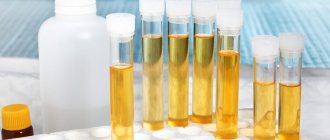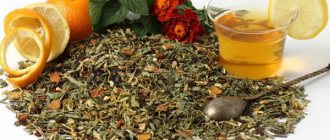Pharmacodynamics and pharmacokinetics
This drug has a significant effect on alpha-adrenergic receptors, exhibiting a noticeable vasoconstrictor and pressor effect compared to adrenaline . At the same time, there is less stimulation of heart contractions, a weak bronchodilator effect and an effect on metabolism, and a pronounced hyperglycemic effect does not appear.
Norepinephrine is characterized by a cardiotropic effect, stimulating cardiac beta-adrenergic receptors, which can be masked by reflex bradycardia , high tone of the vagus nerve, provoked by high blood pressure .
When norepinephrine is administered, cardiac output increases and perfusion pressure in the coronary arteries increases, along with peripheral vascular resistance and central venous pressure.
This drug is widely used when it is necessary to increase blood pressure and increase heart contractions. But this is done primarily to increase peripheral vascular resistance and heart rate. In addition, blood flow in the vessels of the kidneys and gastrointestinal tract decreases. Ventricular arrhythmias . For this reason, norepinephrine is not used in complex cases of cardiogenic shock.
This can cause a vasoconstrictor reaction in peripheral vessels, which means their resistance can lead to an undesirable effect. The myocardial oxygen demand also increases significantly , which negatively affects the condition of the whole organism.
Evaluation criteria/Clinical outcomes
Main indicator of effectiveness and safety: change in S.I. Main safety indicator: incidence of treatment-resistant K.Sh. Treatment-resistant CS was diagnosed in the presence of persistent arterial hypotension, hypoperfusion of target organs and hyperlactatemia, as well as in the use of high doses of PPIDs and SSPs.
Additional outcome measures: change in other hemodynamic parameters, cardiac power index (PMI), frequency of PPID use, blood lactate concentration and lactate clearance, biomarker concentrations, and change in SOFA score during the first 72 hours.
The safety assessment specifically assessed the incidence of arrhythmias such as ventricular tachycardia, ventricular fibrillation and atrial fibrillation.
Interaction
The simultaneous use of norepinephrine and inhalational anesthetics can lead to complicated ventricular arrhythmia.
Combination with adrenergic and serotonergic antidepressants, imipramine or amitriptyline leads to the development of paroxysmal hypertension , cardiac arrhythmia caused by an adrenergic blocking effect on the functioning of the nervous system.
The use of selective and non-selective MAO inhibitors, Linezolid , etc., together with Norepinephrine can enhance its pressor effect, so constant medical monitoring is required.
Norepinephrine
Norepinephrine[edit | edit code]
Source: Clinical Pharmacology by Goodman and Gilman Volume 1
.
Editor
: Professor A.G.
Gilman Ed.
: Practice, 2006.
Norepinephrine
is the main transmitter of postganglionic sympathetic neurons in mammals. It differs from adrenaline only in the absence of a methyl group at the amino group (Table 10.1). In humans, norepinephrine accounts for 10-20% of all adrenal medulla catecholamines. Pheochromocytoma cells sometimes do not express phenylethanol, M-methyltransferase, and then their norepinephrine content reaches 97%. The history of the discovery of norepinephrine and its mediator function are discussed in detail in Chapter. 6.
Pharmacological properties
. Comparison of the effects of norms. adrenaline and adrenaline - both in vivo and in vitro ~ many works are devoted to this. Both of these substances act directly on effector organs, and their effects differ mainly in their different activities in relation to α- and β2-adrenergic receptors (their activity in relation to β-adrenergic receptors is approximately the same). Norepinephrine is a powerful stimulant of α-adrenergic receptors, but it has a weak effect on α2-adrenergic receptors. The activity of adrenaline against α-adrenergic receptors in most organs is even higher than that of norepinephrine.
The cardiovascular system
. In Fig. 10.2 shows changes in some hemodynamic parameters that occur in humans in response to an intravenous infusion of norepinephrine at a rate of 10 mcg/min. Systolic, diastolic and usually pulse blood pressure increases; cardiac output does not change or decreases, and peripheral vascular resistance increases. Since the direct positive chronotropic effect of norepinephrine is weak, heart rate decreases due to a reflex increase in parasympathetic tone; as a result, stroke volume increases. In most organs, arteriolar narrowing occurs. Renal, hepatic blood flow and blood flow in the gastrointestinal tract decrease, but coronary blood flow, on the contrary, increases. Obviously, as with the action of adrenaline (see above), this is due to secondary expansion of the coronary vessels and an increase in their perfusion pressure. In patients with vasospastic angina, the sensitivity of the coronary vessels to the direct vasoconstrictor effect of norepinephrine may be increased (Chapter 32).
Unlike adrenaline, norepinephrine in small doses does not cause vasodilation and a decrease in blood pressure. Therefore, alpha-blockers eliminate the pressor effect of norepinephrine, but do not lead to the development of a paradoxical reaction to norepinephrine.
Other effects
. The influence of norepinephrine on other systems in humans is weakly expressed. Hyperglycemia and other metabolic changes characteristic of the action of adrenaline occur only with the administration of very large doses of norepinephrine. In other words, as a hormone, norepinephrine is much less effective than adrenaline. Intradermal administration of norepinephrine causes sweating that is not eliminated by atropine. Pharmacokinetics. Norepinephrine, like adrenaline, is ineffective when taken orally, and is poorly absorbed when administered subcutaneously. It is quickly inactivated by the same enzymes as adrenaline (see above). Normally, norepinephrine was found in urine in low concentrations. The content of norepinephrine in urine is sharply increased in patients with pheochromocytoma.
Side effects and precautions
. The side effects of norepinephrine are the same as adrenaline, although the increase in blood pressure is more pronounced. With an overdose of norepinephrine, AQ can reach alarming numbers, so when systemically administering norepinephrine, this indicator must be carefully monitored.
When IV infusion of norepinephrine, it is important to ensure that it does not enter the surrounding tissues - otherwise their necrosis is possible. To do this, long catheters are used, which are inserted into the peripheral veins and advanced into the central veins. In case of circulatory disorders at the site of norepinephrine administration (whether due to its flow from the vein into the tissue or not), the corresponding area is infiltrated with the α-blocker phentolamine. During the infusion of norepinephrine, and especially when selecting the rate of administration, blood pressure should be measured frequently. The administration of this drug always carries the threat of reducing renal and intestinal blood flow.
Application
. Norepinephrine is rarely used. The use of norepinephrine and other adrenergic drugs for shock is described below. In case of arterial hypotension, the rate of its infusion is adjusted until the desired blood pressure is achieved.
Analogs
Level 4 ATX code matches:
Mezaton
Dobutamine
Dopamine
Dopamine
Adrenalin
Main analogues: Arterenol, Levarterenol, Levofed, Norarthrinal, Norepinephrine and Norexadrin .
Differences between Noranrenaline and Adrenaline
Adrenaline is produced by the adrenal medulla. This component is involved in various processes in the body: stimulating the breakdown of glycogen in liver hepatocytes, which leads to an increase in glucose in the blood , activates the lipase enzyme and the breakdown of triglycerides in adipose tissue, as well as glycogenolysis in muscle cells.
The contraction of the heart muscles also increases and blood pressure increases, the muscle and heart vessels dilate, but the vessels of the abdominal organs, skin and mucous membranes narrow. A significant influence of adrenaline on the body's response to stressful situations has been noted.
Norepinephrine has a pronounced vasoconstrictor effect, has less effect on heart contractions, has a weak bronchodilator effect and influence on metabolic processes.
The normal content of adrenaline in the blood is 88 mcg/l, and norepinephrine is in the range of 104-548 mcg/l.
The need to determine the concentration of these components arises when it is necessary to identify pheochromocytomas and carry out a differential diagnosis of hypertension.
References
- Rumyantsev, P.O., Yazykova, D.R., Slashchuk, K.Yu. and others. Personalized diagnosis of chromaffin tumors (pheochromocytoma, paraganglioma) in oncoendocrinology. Endocrine surgery, 2021. - No. 1.
- Repina, V.P. The influence of different concentrations of catecholamines on the functioning of immunocompetent cells. Human Ecology, 2008. - No. 2.
- Melnichenko, G.A., Troshina, E.A., Beltsevich, D.G. and others. Clinical recommendations of the Russian Association of Endocrinologists for the diagnosis and treatment of pheochromocytoma/paraganglioma, 2015. - T. 9. - No. 3.
- Beltsevich, D.G., Troshina, E.A., Yukina, M.Yu. Pheochromocytoma. Problem endokr., 2010. - No. 1.
Reviews about Norepinephrine
It should be noted that this drug is often used in critical cases when there is a fight for a person’s life. Therefore, it is impossible to find reviews about Norepinephrine left by patients. In such situations, people are unlikely to be able to assess the effect of a particular drug, and most likely do not even know that they received such treatment.
As a rule, medical specialists discuss this drug online. This is usually related to the question of how to increase Norepinephrine when critical situations arise. The fact is that this needs to be done quickly, but the speed of introduction of the solution is an important aspect of its use. Therefore, you have to use all your experience and knowledge, which helps a person not to die and conduct full-fledged intensive therapy.
The features of this drug are described in detail by Wikipedia, where it is reported that there is no need to administer it independently. As for medical professionals, it is important that they have sufficient experience and professionalism to use Norepinephrine in practice.
results
Of the 163 patients examined, 106 were not included in the study mainly due to the presence of signs of dying (n=34), circulatory arrest accompanied by early signs of cerebral anoxia (n=30), and early signs of the need for PVEM (n=22). In total, 57 patients were included in the study: 27 and 30 patients in the epinephrine group and norepinephrine group, respectively. With the exception of differences in gender composition, there were no significant differences between the 2 groups. Before inclusion in the study, 41 and 60% of patients, respectively, were successfully resuscitated after circulatory arrest in the epinephrine group and norepinephrine group, respectively (p=0.19). When included in the study, 98% of patients underwent artificial ventilation.
All patients included in the study underwent successful emergency myocardial revascularization using PCI, by the end of which a blood flow corresponding to grade 3 according to the TIMI (Thrombolysis In Myocardial Infarction) classification was achieved. The groups did not differ in the frequency of SSP use. A balloon for intra-aortic balloon counterpulsation after PCI in the epinephrine group and norepinephrine group was installed in 59 and 50% of patients, respectively (p=0.60). None of the patients developed mechanical complications of AMI.
In an analysis based on the assumption that all patients received the prescribed treatment, and taking into account data on patients who died or patients who required implantation of devices for PVEM as the least favorable outcome, the main effectiveness indicator (change in CI) was not statistically significantly different between the epinephrine group and the norepinephrine group (p=0.43). However, based on data obtained at hours 2 and 4, there was a short-term increase in CI in the epinephrine group compared to the norepinephrine group (p = 0.011 and 0.036, respectively). At the same time, in the epinephrine group compared to the norepinephrine group, there was a statistically significant increase in the main safety indicator (the incidence of treatment-resistant shock): such outcomes were observed in 37 and 7% of patients, respectively (p = 0.011). Given the increased incidence of treatment-resistant shock in the epinephrine group, the data and safety monitoring committee decided to terminate the study early. It should be noted that this adverse outcome was not intended to be assessed as a primary safety outcome when the study was designed. However, the development of treatment-resistant shock was systematically monitored throughout the study and began to be carefully assessed after receiving information from the observation team about an unexpected increase in the incidence of this outcome during the 1st year after the start of the study. Therefore, although this outcome was not determined before the study began, it was determined during the course of the study.
The doses of study drugs that needed to be administered to achieve a MAP of 70 mm Hg in the epinephrine group and norepinephrine group were 0.7 ± 0.5 and 0.6 ± 0.7 μg/kg/min, respectively (p = 0 ,66). There were no statistically significant differences between the groups in the duration of use of SSP (p = 0.15), doses of SSP at different points (from hour 0 to hour 72; p = 0.66), as well as in the maximum dose of SSP (p = 0, 79). Changes in systolic BP, diastolic BP and MAP during the first 3 days after study entry were similar in both groups (p=0.11, 0.13 and 0.80, respectively).
In the epinephrine group, heart rate increased statistically significantly, while in the norepinephrine group, heart rate did not change statistically significantly (p = 0.031 for comparison between groups). There were no statistically significant differences between the groups in changes in the stroke volume index and IMI (p=0.25 and 0.064, respectively). The double product (an indirect measure of myocardial oxygen consumption) increased in the epinephrine group and did not change in the norepinephrine group. The venous-arterial gradient of partial pressure of carbon dioxide (pCO2) was similar in the epinephrine group and the norepinephrine group (p=0.59). In both groups, there was a progressive decrease in the average index of systemic vascular resistance (SIVR) in the absence of statistically significant differences between groups in this indicator (p = 0.44).
Mean PA and PAPA pressures were similar in both groups (p=0.48 and 0.38, respectively). In addition, both groups showed a similar progressive increase in LVEF (p=0.87).
The results of the analysis of the frequency of PPID use showed that the frequency of dobutamine use in the epinephrine group and norepinephrine group was similar and reached 67% (p = 0.99). The mean duration of dobutamine use in the epinephrine group was 22 hours (range, 7 to 72 hours) and in the norepinephrine group, 90 hours (range, 63 to 161 hours; p=0.0009 for comparison between groups). There were no statistically significant differences between groups in the frequency of dobutamine use at certain points in the study (from hour 0 to hour 72; p=0.78) and the maximum dose of dobutamine administered (p=0.88).
The results of the analysis of metabolic parameters during the first 24 hours indicated an association between the use of adrenaline and the presence of metabolic acidosis (p=0.0004), as well as an increase in blood lactate levels (p<0.0001). At the same time, when using norepinephrine, an increase in blood pH and a decrease in the concentration of lactate in the blood were noted. The removal of lactate from the blood began much earlier and at a higher rate in the norepinephrine group (p<0.0001). The dynamics of arterial blood oxygen saturation (SVO2), oxygen consumption index and oxygen delivery index during the study were similar in both groups (p=0.20, 0.67 and 0.69, respectively).
The results of the analysis of the frequency of development of organ dysfunction indicated that the SOFA scale score, as well as the components of such a scale, did not differ statistically significantly between the groups both at inclusion in the study and during the observation period of patients (p = 0.44). During the study, there were no statistically significant differences between the groups in the variability of such indicators as the concentration of creatinine and urea in the blood, the severity of diuresis, as well as the level of aspartate aminotransferase and bilirubin in the blood. In the norepinephrine group, compared with the adrenaline group, there was a more rapid decrease in the concentration of alanine aminotransferase in the blood (p = 0.011). The incidence of renal replacement therapy in the epinephrine group and norepinephrine group reached 26% and 7%, respectively (p=0.07). During the first 72 hours, there were no statistically significant differences in the levels of such biomarkers in the blood as N-terminal precursor of brain natriuretic peptide and cardiac-specific troponin T (p = 0.20 and 0.21, respectively). In contrast, the concentration of the prognostic marker of cardiovascular disease complications, differentiating growth factor type 15, was significantly higher in the epinephrine group compared to the norepinephrine group between hours 24 and 72 (p = 0.002).
The incidence of arrhythmias did not differ significantly between the adrenaline group and the norepinephrine group (arrhythmias developed in 41 and 33% of patients, respectively; p = 0.56). In the adrenaline group, 2 patients were switched to norepinephrine administration without using a blind method due to the development of sustained ventricular tachycardia.
During 60 days of observation, 52% and 37% of patients died in the epinephrine group and norepinephrine group, respectively (p=0.25). Epinephrine compared with norepinephrine was associated with a trend towards increased mortality during the first 7 days (p=0.08) and a statistically significant increase in the composite of all-cause mortality or need for PVEM during the first 7 days (p=0.031). There was also a trend towards an increase in the composite of all-cause mortality or need for PVEM during the first 28 days (p=0.064).
Norepinephrine price, where to buy
The price of Noradrenaline for a package of 10 ampoules is from 1,550 rubles.
You can buy Noradrenaline in Kyiv at a cost of 1300 UAH.
- Online pharmacies in RussiaRussia
- Online pharmacies in UkraineUkraine
ZdravCity
- Norepinephrine conc.
d/prig. solution for intravenous injection. 2 mg/ml 4 ml 10 pcs FKP Armavir biofactory 1213 rub. order - Norepinephrine conc. d/prig. solution for intravenous injection. 2mg/ml 8ml 10pcs FKP Armavir biofactory
RUB 1,502 order
show more
Pharmacy24
- Norepinephrine Tartrate Agetan 2mg/ml 8ml N10 concentrate for solution for infusion
2403 UAH.order - Norepinephrine Tartrate Agetan 2 mg/ml 4ml No. 10 concentrate for solution for infusion
1602 UAH. order





